Turning Red is Pixar’s pioneering anime movie that'll make you relive your youth
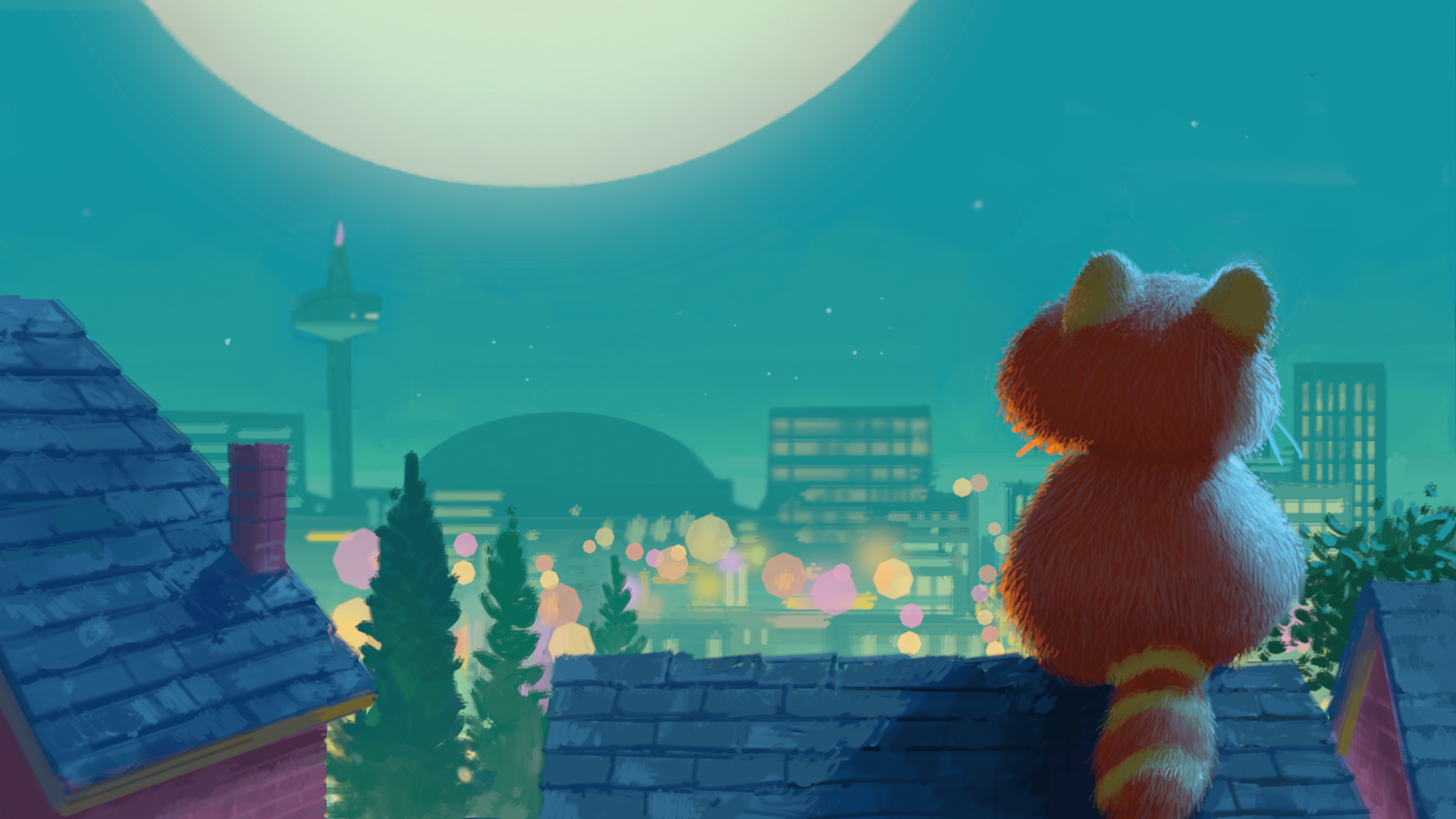
Pixar is a pioneering powerhouse. From creating the first entirely CGI feature film in Toy Story to crafting family-friendly movies with rich, grown-up themes like Soul, the Disney subsidiary has been spearheading a modern golden age of animation for nearly 30 years.
As one of the world’s pre-eminent studios, Pixar continuously strives to push filmmaking boundaries – and Turning Red is no different. Pixar’s 25th feature film is another beautiful-looking flick with a captivating nostalgia-fuelled storyline, but its development wasn’t without challenges. Unlike other Pixar ventures, such as Luca, the ongoing pandemic wasn’t the biggest obstacle for Turning Red’s crew to overcome. Instead, the decision to overhaul the studio’s famed approach to animation proved more problematic.
“We’re always trying to leave our comfort zone,” producer Lindsey Collins tells TechRadar. “We’ve become very comfortable with creating films that are kind of realistic or stylized with a certain look. To be totally frank, there was some hesitancy to fully embrace a new direction – people were concerned and nervous that it wouldn’t be successful.”
Ahead of Turning Red’s March 11 release, TechRadar sat down with Collins and director Domee Shi to discuss how Pixar overcame adversity to deliver a uniquely stylized film. We also chat about the movie’s celebration of 90s culture, plus the anime and other unusual influences behind its distinctive design.
A monster calls
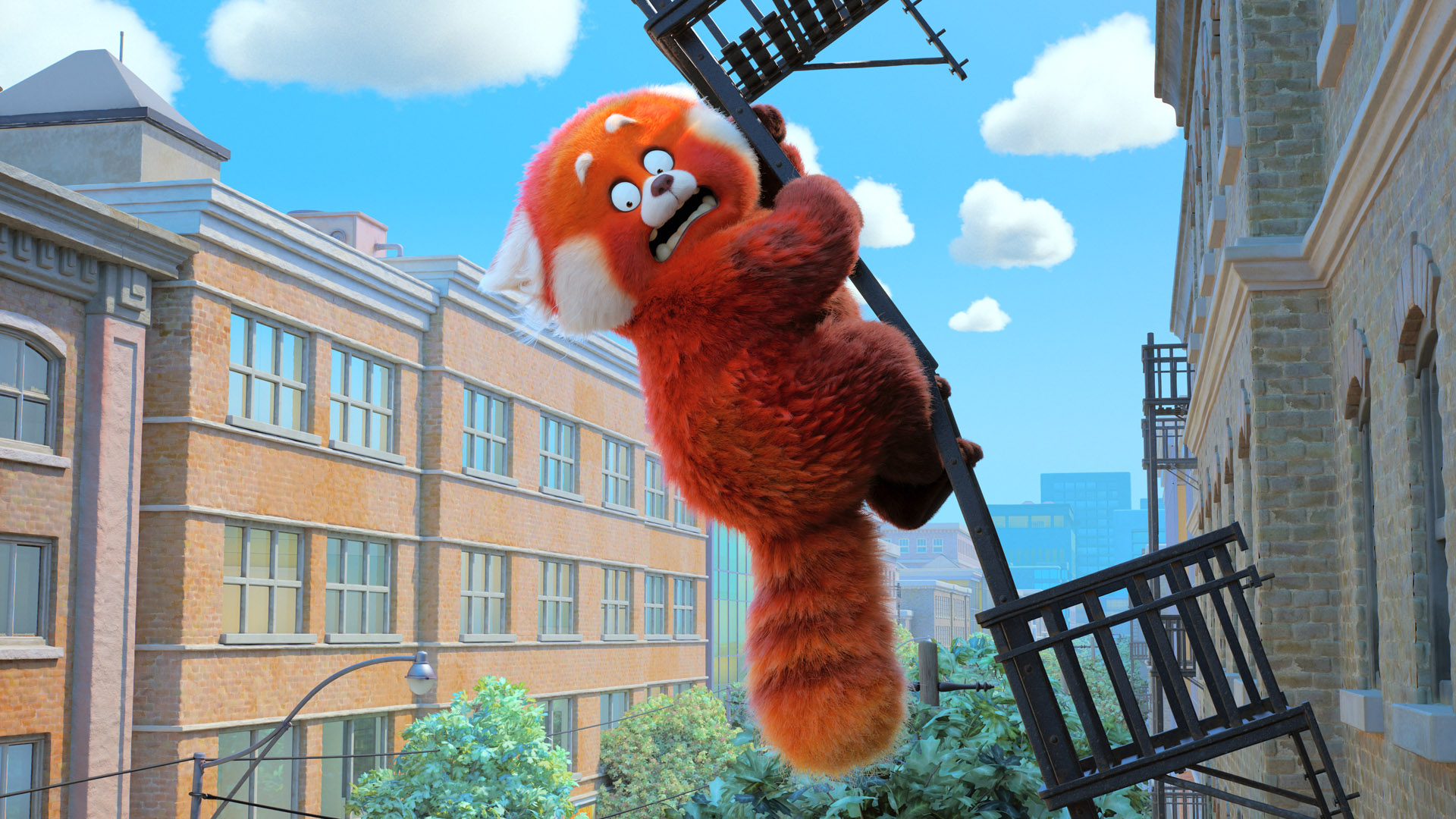
Set in early 2000s Toronto, Turning Red tells the tale of Meilin ‘Mei’ Lee (Rosalie Chiang), a confident but nerdy Chinese-Canadian schoolgirl with a seemingly perfect life. She’s a grade-A student who boasts a close-knit ‘ride or die’ friendship group comprising Miriam (Ava Morse), Priya (Maitreyi Ramakrishnan), and Abby (Hyein Park). Mei is also extremely close to her overbearing mom Ming (Sandra Oh), but she’s proud of their relationship and the cultural heritage they share. Simply put, life couldn’t be better.
That is, until one morning when Mei inexplicably wakes up as a giant red panda. Initially horrified by her new appearance, Mei soon realizes that her cute-but-fiery alter ego only emerges when she gets too emotional. By staying calm, Mei can keep a lid on her new form – but that’s easier said than done. Torn between her deep-seated family ties and her increasing desire for freedom (not to mention the onset of puberty), Mei is forced to navigate the highs and lows of teenage life, all the while trying to find a cure to her beastly curse.
Given that Shi emigrated to Toronto with her parents as a toddler, Turning Red’s director admits that certain plot points and elements of Mei’s character are inspired by her childhood. For instance, the scene where Ming turns up at Mei’s school – using sunglasses as her only form of disguise – to spy on her, and subsequently embarrass Mei in front of her schoolmates, is directly lifted from Shi’s own life.
Sign up for breaking news, reviews, opinion, top tech deals, and more.
It’s this intergenerational battle between Asian parents and their children, especially mother-daughter relationships, that was a key theme Shi wished to explore at length. As she jokes: “I needed a full film to tell that story”.
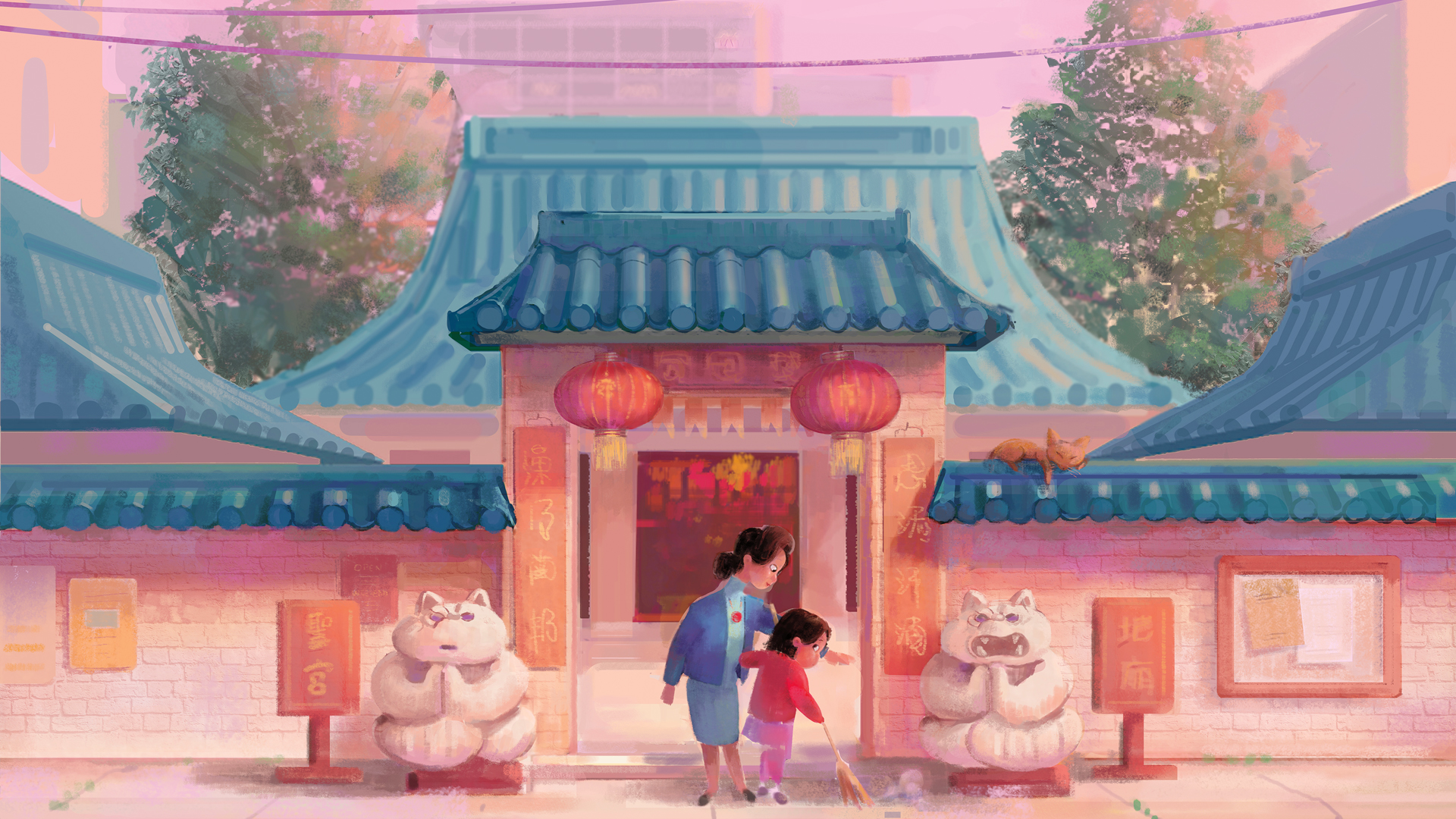
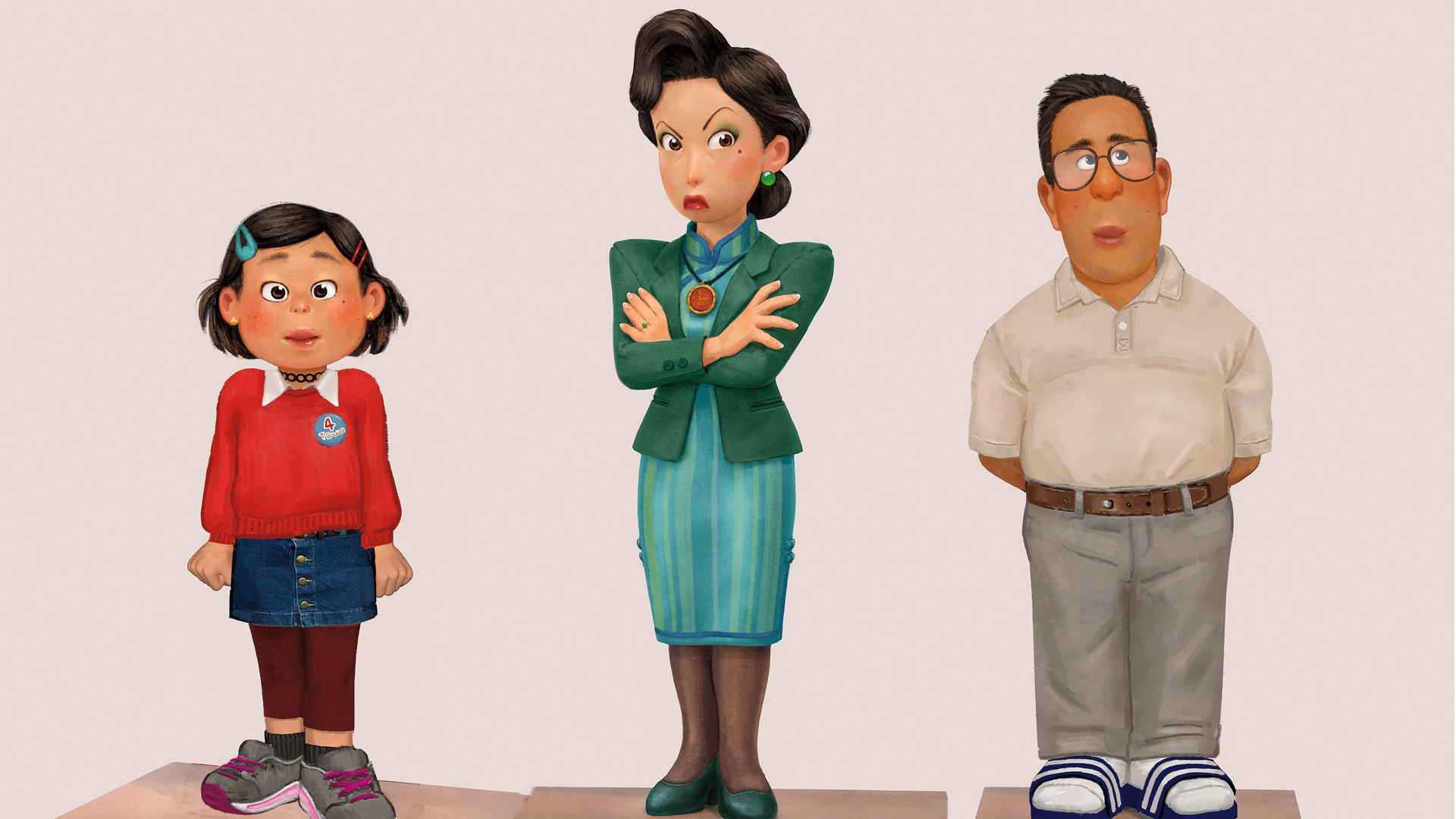
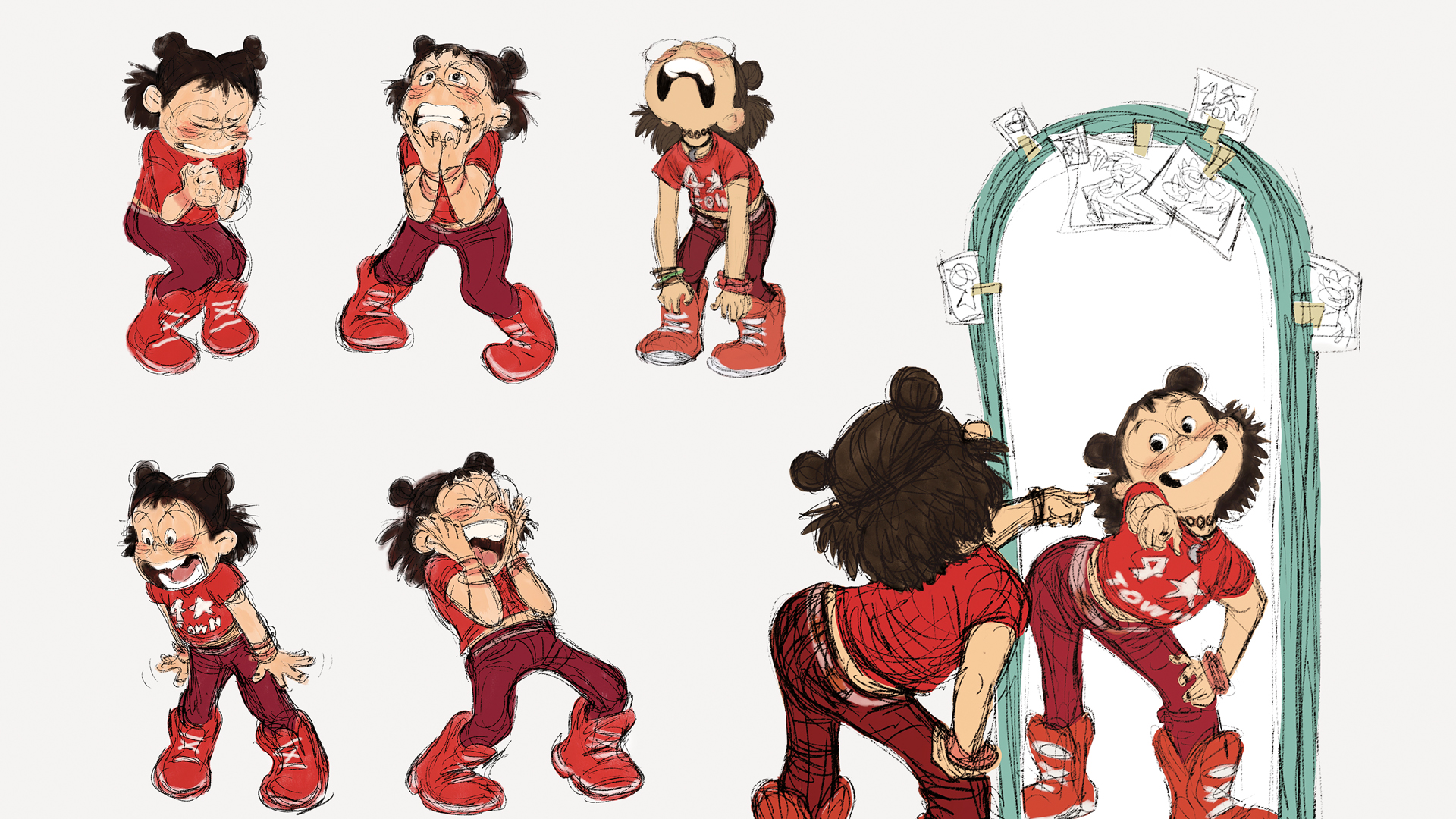
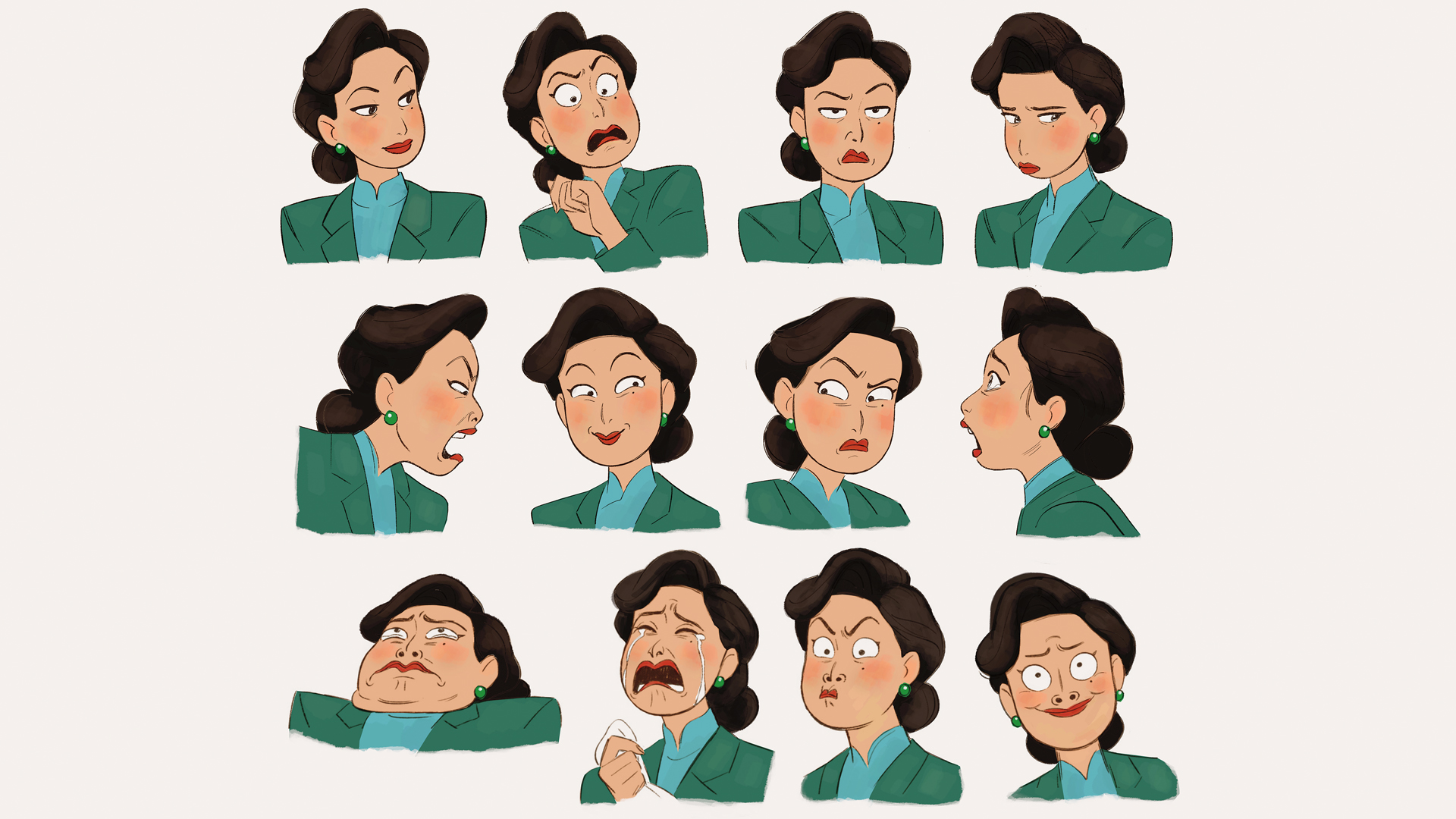
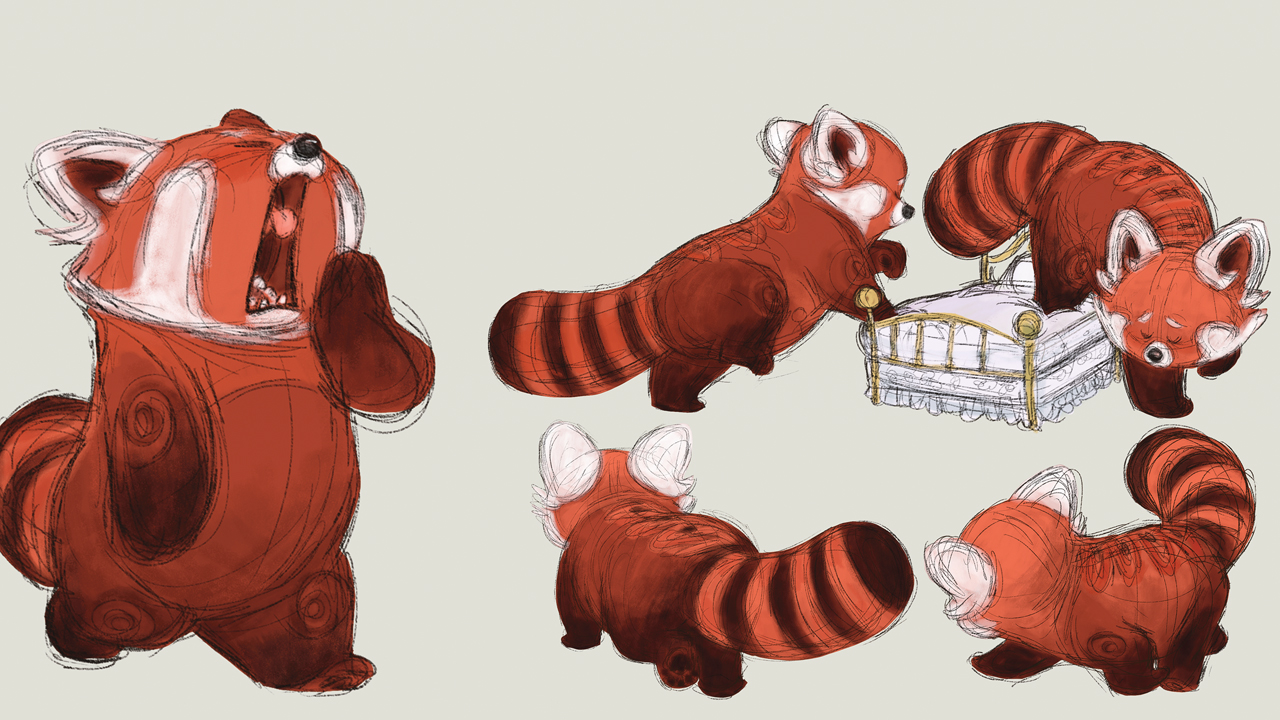
For a movie that explores adolescence, familial bonds, and companionship through a female lens, Turning Red needed the right individuals to lead its development. It’s fitting, then, that an allegorical film about the transition to womanhood is the first Pixar flick to feature an all-female leadership team.
Their personal input was vital to how Turning Red, well, turned out. Shi – whose animated short ‘Bao’ won an Academy Award in 2019 – was cautious about turning her feature directorial debut into a memoir-esque tale that some viewers may not find relatable. With the aid of their female co-workers, though, Shi and Collins were not only able to capture the confusing and at-times isolating aspects of puberty, but also the depth of female relationships.
“I was nervous about airing the embarrassing and dramatic moments of my life,” Shi admits. “But good stories come from a real place of vulnerability. It was also important to me not to make it semi-autobiographical, because who wants to see that? We had to put some magic in it, and make it fun, entertaining, and engaging for audiences.”
“It’s a very personal story,” Collins adds. “We always try to lean into that when we start new projects to capture its true essence. Domee’s ability to immediately bring that to the table, especially with Mei and Ming’s relationship, was a great starting point.”
Breaking with tradition

There was one phrase, though, in Shi’s initial pitch that piqued the interests of Pixar’s executive team – Turning Red needed to be an ‘Asian tween fever dream’ anime-style film.
The ‘Asian tween fever dream’ element was easy to comprehend. Mei’s Chinese heritage illustrates the film’s celebration of Asian culture. Tween – or tweenager, to give its full title – describes a child between the ages of 10 and 13. Meanwhile, fever dream relates to the movie’s neon-infused, pastel-colored fantasy aesthetic.
But Shi’s desire to make an anime flick proved troublesome for some Pixar employees. This is a studio comprising veteran artists, animators, and other crew members that have produced similarly styled movies for 25-plus years. Why deviate from a formula that’s led to multiple award wins and immeasurable acclaim from fans and critics alike?
“We wanted to create something unique,” Shi explains. “Mei is a mix of Canadian and Chinese, so we wanted to equally honor western and eastern animation styles. That’s why we drew inspiration from classic anime from the late 90s and early 2000s.”
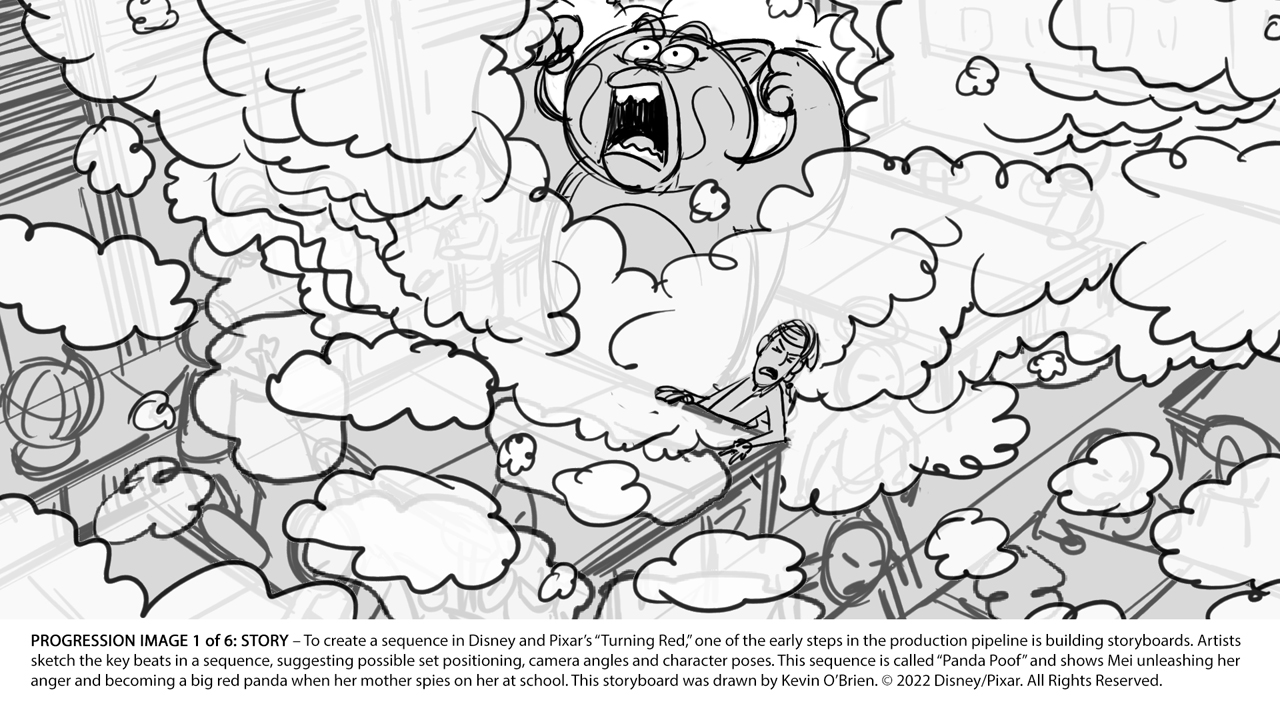
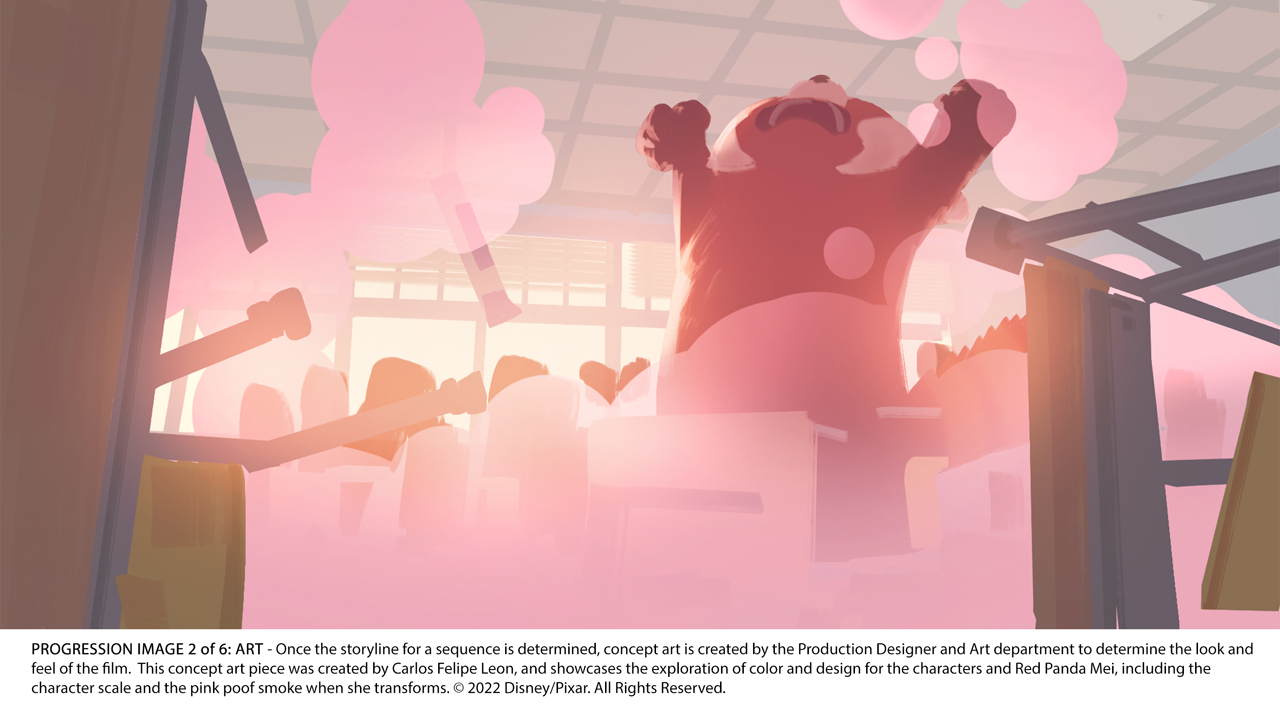
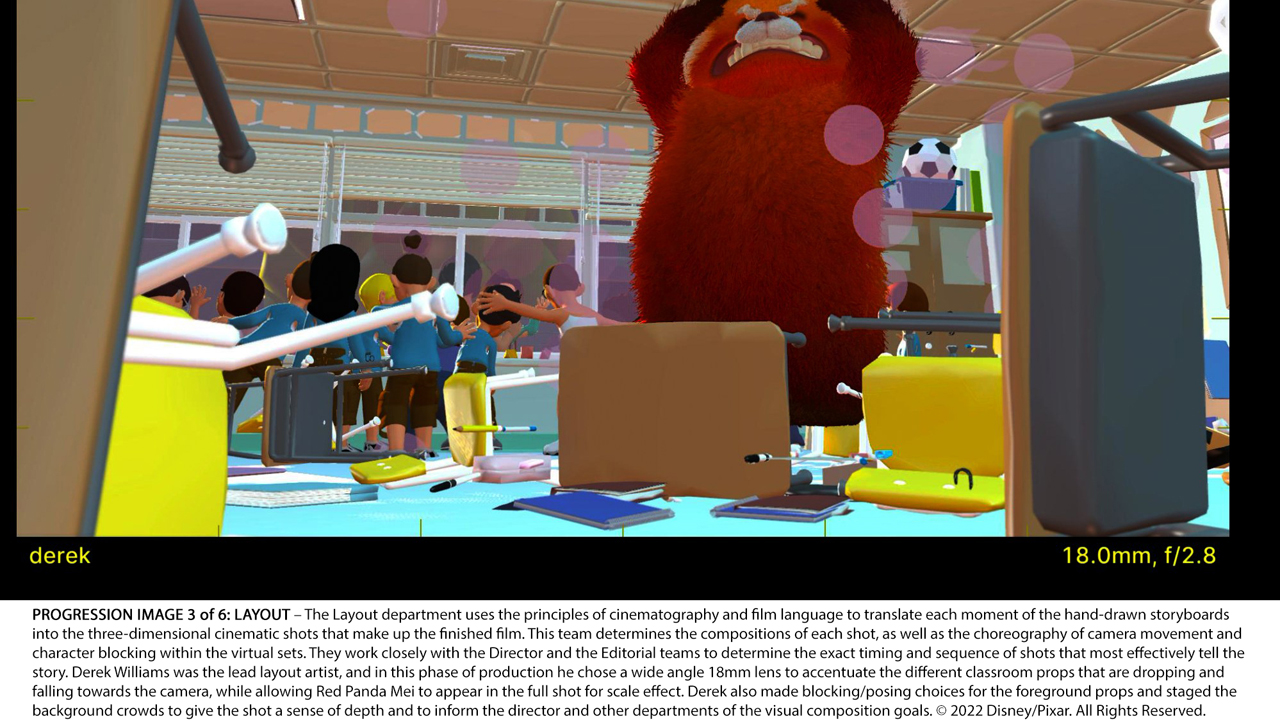
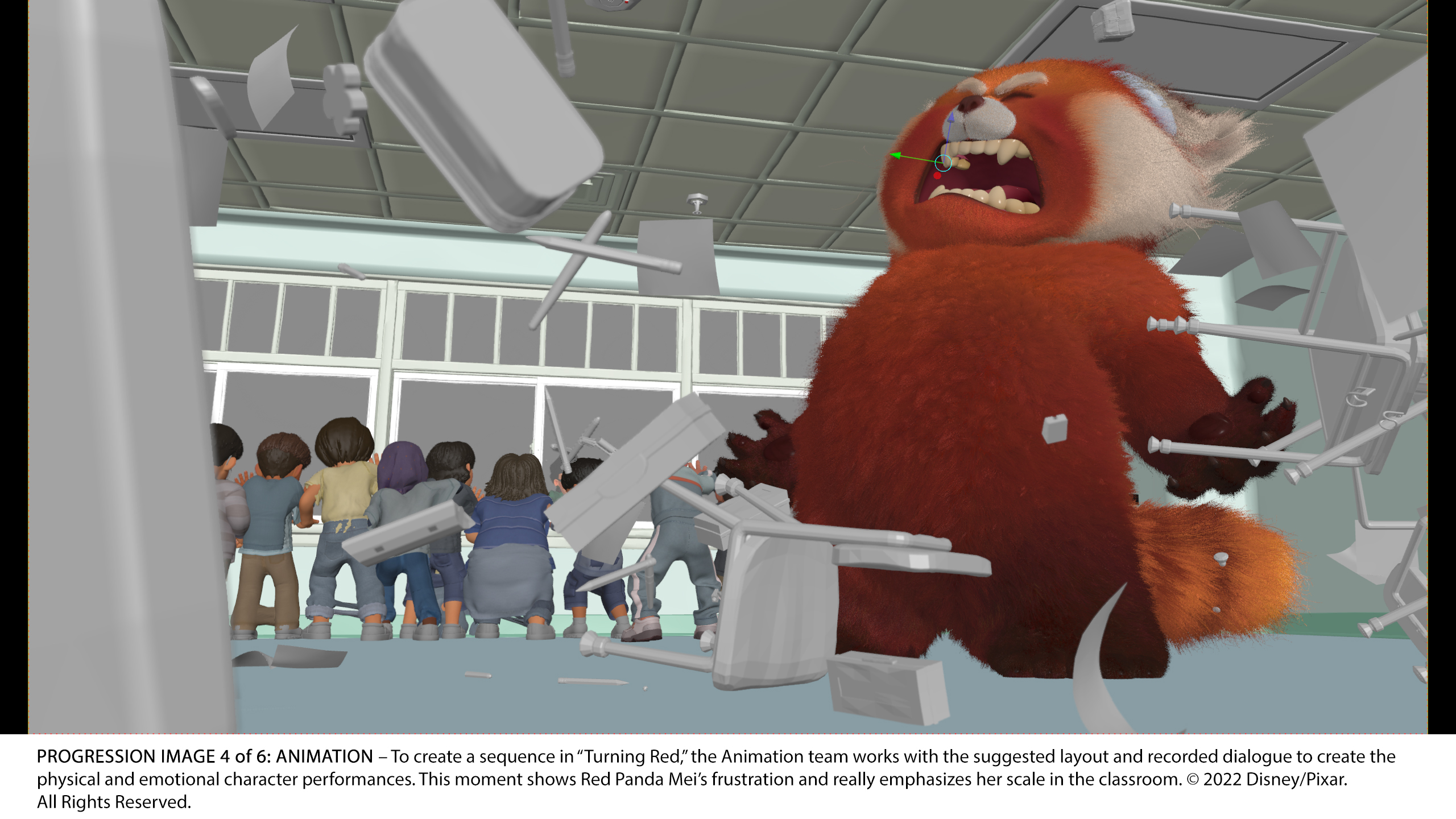


That anime and manga influence is evident from the get-go. Mei’s exaggerated running gait is reminiscent of characters in Eiichiro Oda’s One Piece series. Her red panda transfiguration is comparable to equivalent transformations in Natsuki Takaya’s Fruits Basket and Rumiko Takahashi’s Ranma ½. Traditional anime eyes, as seen in classic anime including Sailor Moon and Pokémon, are heavily used throughout to accentuate a character’s emotions. Even Mei’s red panda form is evocative of Totoro in Studio Ghibli’s iconic My Neighbor Totoro movie, while a scene in the movie's third art seemingly pays homage to Hajime Isayama's Attack on Titan (it's also clearly influenced by Toho's Godzilla, which has its own anime style shows).
As Shi points out, though, there’s a specific western anime series that was as influential as its eastern counterparts.
“We were also inspired by Bryan Lee O’Malley’s Scott Pilgrim vs the World,” she reveals. “And Edgard Wright’s film adaptation of that series. I’m a huge fan of their work, especially Edgar’s editing style and quick camera cuts. His Scott Pilgrim film is so comic book and anime-inspired – I love how he styled the backgrounds and fight scenes in a 3D medium, so we took lots of inspiration from that.”
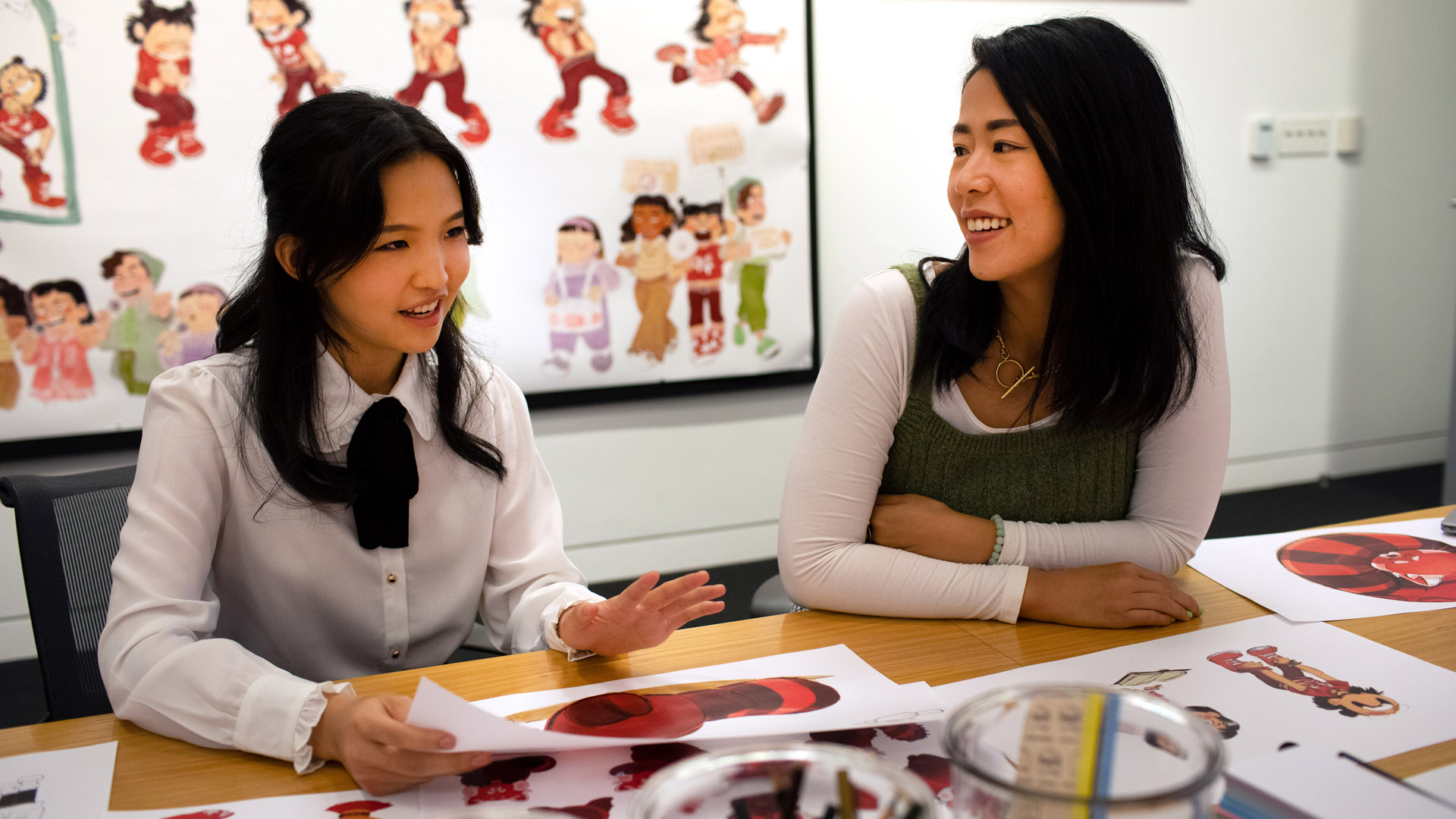

Still, as innovative as Turning Red's development is, diverging from Pixar’s traditional animation format created problems. Crew members were used to crafting 3D characters and environments, and showing a character’s pair of eyes to help audiences gauge an individual’s emotional state.
Turning Red threw Pixar’s conventional animation manual out of the window. A mix of 2D and 3D animation – combining hand-drawn anime elements with 3D lighting, character and structural designs, and general atmosphere – was decided early on. The occasional use of 2D character profiles, where viewers would only see one eye, proved to be a difficult technique for some veteran staffers to understand.
It was an animation technique called ‘isolated motion’, though, that proved most difficult to execute. Pixar animators were used to moving multiple character limbs to embellish their reactions on the screen. However, isolated motion required animators to move a single limb, such as an arm, while the rest of a character’s body remains stationary. For a few crew members, this new animation technique was difficult to master. That is, until a new piece of animation software – Profile Mover – was introduced.
“Profile Mover was a huge game-changer in how we make characters move,” Collins reveals. “The 2D elements aren’t typical for us but were driven by Domee’s desire to play in this new sandbox. We were very conscious of making this look overly simplistic or even cheap, so we spent a lot of time proving this could work in the testing phase and creating a holistically styled look for the movie. Profile Mover helped our animators to relearn what was possible from an animation perspective. I think it’s going to be used in all of our films going forward.”
Nineties nostalgia

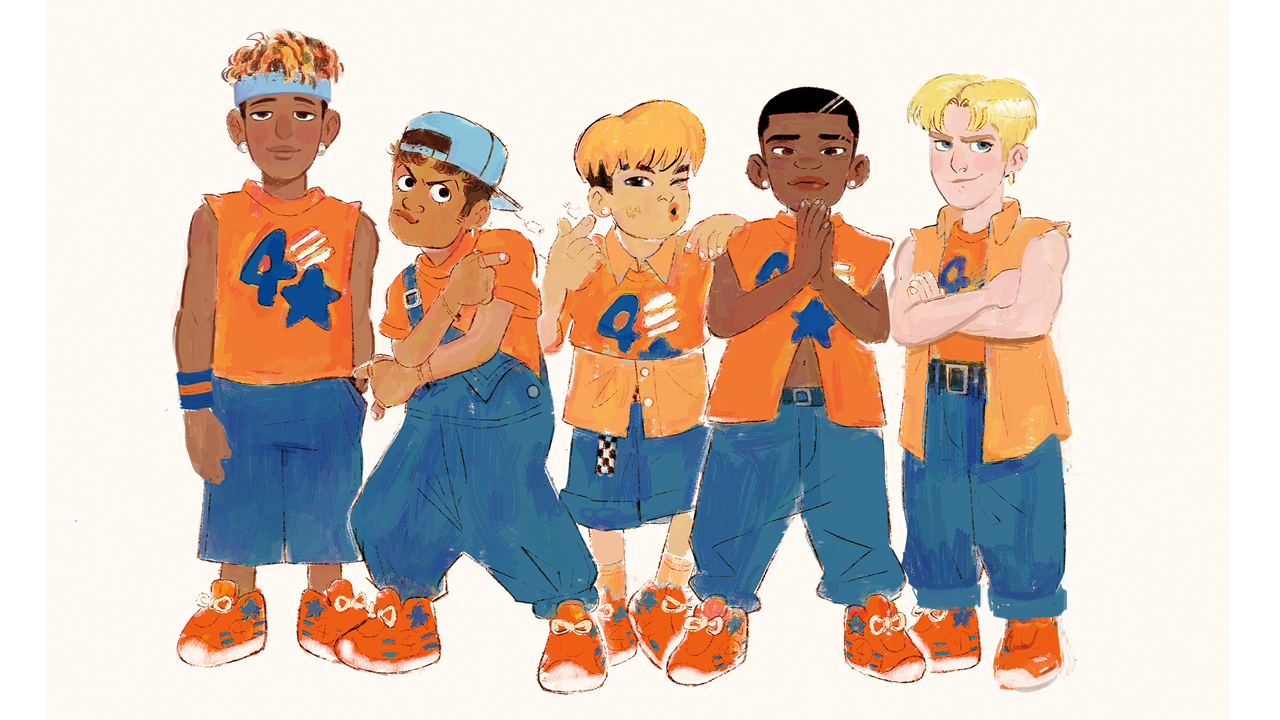

From The Good Dinosaur to WALL-E, Pixar has run the gamut of time itself. The studio has taken audiences on journeys into the past and far future, but Turning Red’s setting roots it in the early 2000s – a period that’ll make some viewers wistfully look back on their childhoods.
Turning Red is packed with 90s culture and playground crazes. From Tamagotchis, bucket hats and sketchbooks, to fanny packs, grunge fashion and boybands, Pixar’s latest movie is a nostalgia-fueled love letter to a bygone era. As a 90s child, Shi’s desire to set the film around this era may seem obvious, but there was another major reason behind its post-millennium setting.
“We wanted to tell an adolescent story without having to deal with social media,” Shi says. “If you told it in the modern age, you can't ignore that, and I wanted a blank canvas to tell this coming-of-age tale. The aesthetic of the late 90s and early 2000s was really fun and colorful, so it just felt like a really cool time period to try to depict and stylize.”
Viewers of a certain age will enjoy rewatching Turning Red to discover its cultural references alongside the traditional hunt for Pixar Easter eggs, Pizza Planet truck included.
And rewatch it, you can. Turning Red was due to be released in theaters worldwide, but the rapid rise of Covid-19’s Omicron variant in late 2021 led to a revised release strategy. On January 8, Disney announced that Turning Red would debut exclusively on Disney Plus; a decision taken with film fans’ safety in mind. As much as Shi, Collins and Turning Red’s crew understood the sentiment behind the move, Pixar staffers couldn’t help but lament the last-minute switch. As Collins succinctly told us: “It kind of sucks”.
Disappointing as that decision is for Pixar employees and fans alike, it still beats the alternative – that is, not being able to see the film at all. Turning Red is a movie that represents a series of firsts for the studio, and one that’s sure to appeal to many. It’s a joyous and ultimately heart-warming watch that’ll make adults yearn to relive their youth, while its irresistibly charming anime aesthetic is truly groundbreaking, even for a company as established as Pixar.
In time, film aficionados may claim that there are better Pixar movies than Turning Red, but it’s hard to deny how revolutionary it is for the Disney-owned studio. It’s a nostalgia-inducing, thematically resonant flick that celebrates the best of western and eastern animation. Quite frankly, it’s a film that deserves to be seen.
Turning Red is available to stream now on Disney Plus.
As TechRadar's senior entertainment reporter, Tom covers all of the latest movies, TV shows, and streaming service news that you need to know about. You'll regularly find him writing about the Marvel Cinematic Universe, Star Wars, Netflix, Prime Video, Disney Plus, and many other topics of interest.
An NCTJ-accredited journalist, Tom also writes reviews, analytical articles, opinion pieces, and interview-led features on the biggest franchises, actors, directors and other industry leaders. You may see his quotes pop up in the odd official Marvel Studios video, too, such as this Moon Knight TV spot.
Away from work, Tom can be found checking out the latest video games, immersing himself in his favorite sporting pastime of football, reading the many unread books on his shelf, staying fit at the gym, and petting every dog he comes across.
Got a scoop, interesting story, or an intriguing angle on the latest news in entertainment? Feel free to drop him a line.
